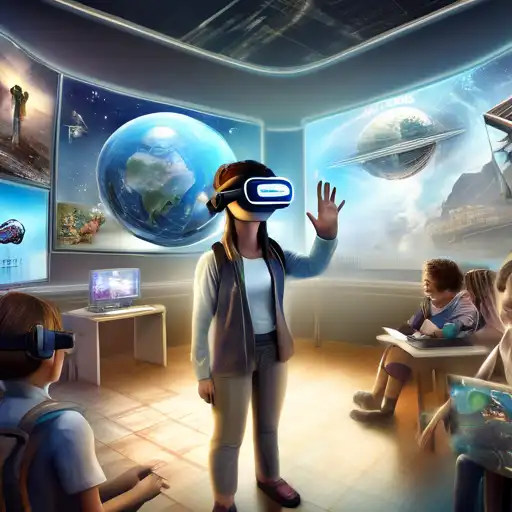Introduction to Virtual Reality in Education
Virtual Reality (VR) is rapidly transforming the educational landscape, offering immersive learning experiences that were once unimaginable. This technology is not just a tool for entertainment but a powerful educational instrument that can enhance learning outcomes across various disciplines.
The Benefits of VR in Learning Environments
VR brings a host of advantages to the educational sector, including but not limited to:
- Enhanced engagement through immersive experiences
- Improved retention rates by simulating real-life scenarios
- Accessibility to distant or dangerous locations for educational purposes
- Customizable learning experiences to suit individual needs
These benefits highlight VR's potential to revolutionize how we approach teaching and learning in the 21st century.
Implementing VR in Classrooms
Integrating VR into educational settings requires careful planning and consideration. Schools and institutions must assess their technological infrastructure, train educators on VR tools, and select appropriate content that aligns with curricular goals. Despite these challenges, the payoff in student engagement and learning outcomes can be significant.
Case Studies: VR's Success in Education
Several institutions have already begun to harness VR's potential. For example, medical students are using VR to perform virtual dissections and surgeries, providing a risk-free environment to practice and hone their skills. Similarly, history classes are taking virtual field trips to ancient civilizations, making learning more interactive and memorable.
Challenges and Considerations
While VR offers exciting opportunities, there are hurdles to overcome, such as the high cost of equipment, the need for technical support, and ensuring equitable access for all students. Addressing these challenges is crucial for maximizing VR's educational impact.
The Future of VR in Education
As technology advances, VR is expected to become more accessible and integrated into educational curricula worldwide. The potential for personalized, immersive learning experiences is vast, promising a future where education is more engaging, effective, and inclusive.
For more insights into innovative learning technologies, explore our education technology section.
Conclusion
Virtual Reality stands at the forefront of educational innovation, offering unparalleled opportunities to enhance learning. By embracing VR, educators can provide students with dynamic, immersive experiences that prepare them for the challenges of tomorrow.
